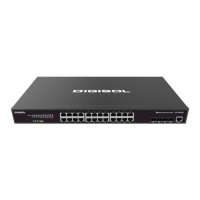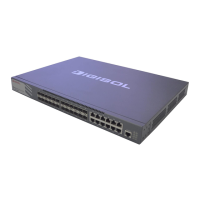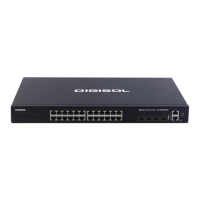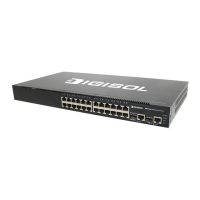– 91 –
13 SNMP SETTINGS
This chapter includes the following sections for configuring Simple Network
Management Protocol (SNMP):
◆ “Simple Network Management Protocol” on page 91
◆ “Setting SNMP System and Community Strings” on page 92
◆ “Specifying SNMP Trap Receivers” on page 93
SIMPLE NETWORK MANAGEMENT PROTOCOL
Simple Network Management Protocol (SNMP) is a communication protocol
designed specifically for managing devices on a network. Equipment
commonly managed with SNMP includes switches, routers and host
computers. SNMP is typically used to configure these devices for proper
operation in a network environment, as well as to monitor them to evaluate
performance or detect potential problems.
Managed devices supporting SNMP contain software, which runs locally on
the device and is referred to as an agent. A defined set of variables, known
as managed objects, is maintained by the SNMP agent and used to manage
the device. These objects are defined in a Management Information Base
(MIB) that provides a standard presentation of the information controlled
by the agent. SNMP defines both the format of the MIB specifications and
the protocol used to access this information over the network.
The switch includes an onboard agent that supports SNMP versions 1 and
2c. This agent continuously monitors the status of the switch hardware, as
well as the traffic passing through its ports. A network management station
can access this information using software such as HP OpenView. Access to
the onboard agent from clients using SNMP v1 and v2c is controlled by
community strings. To communicate with the switch, the management
station must first submit a valid community string for authentication.

